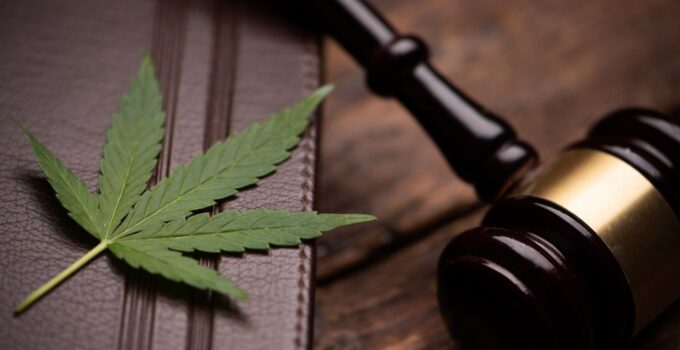The legal landscape of substance regulation is a complex tapestry, particularly when examining substances like tobacco and what is often referred to as marijuana. Despite both being plant-based products consumed for their psychoactive effects, they are governed by vastly different legal frameworks.
Now, we want to talk about the historical context and the contemporary legal panorama, aiming to decode the stark discrepancies in the laws regulating these substances as of 2024.
Historical Perspectives
Of cours, cannabis law depends from country to country, or region to region. Both substances is rooted deeply in cultural and historical contexts. Tobacco, originally used by Indigenous peoples of the Americas, was quickly adopted and commercialized by European settlers.
Conversely, marijuana, with its origins traced to Asia, has faced a tumultuous history, often associated with stigma and legal prohibition. These early perceptions have significantly influenced how societies and legal systems view and regulate these substances.
Over centuries, legal frameworks surrounding these products have evolved dramatically. Tobacco, once a symbol of luxury and later a commonplace product, has seen regulations tighten in response to health research.
Marijuana, on the other hand, has traversed a path from widespread use, through a period of stringent prohibition, to a growing wave of legalization, particularly for medicinal purposes. This section examines key legal milestones that have shaped the contemporary regulatory landscape.
Current Legal Status of Tobacco

Source: static.dan.co.me
In today’s regulatory environment, tobacco stands as one of the most stringently overseen substances. The laws governing its use typically encompass a range of measures aimed at minimizing its impact on public health.
Age restrictions are a universal feature, with most jurisdictions prohibiting the sale of tobacco products to individuals under a certain age, typically 18 or 21 years. These age-related laws are enforced to prevent early onset of tobacco use among adolescents, a group particularly vulnerable to developing long-term addiction.
Furthermore, controls on advertising are extensive. Many countries have implemented complete bans on tobacco advertising, promotion, and sponsorship, recognizing that such marketing can glamorize smoking, especially to younger audiences.
In addition, mandatory health warnings on tobacco packaging are now a norm worldwide. These warnings, often graphic and direct, are designed to inform consumers of the risks associated with tobacco use, including severe health consequences.
Public health strategies have progressively focused on diminishing the prevalence of tobacco use. One of the most common approaches has been the implementation of heavy taxation on tobacco products.
By increasing the cost, governments aim to deter purchase and consumption, particularly among younger and low-income smokers, who are more price-sensitive. These tax revenues are often channeled into healthcare and anti-smoking initiatives, creating a feedback loop aimed at further reducing tobacco use.
Smoking bans in public places have become increasingly widespread. These bans, which often include workplaces, bars, restaurants, and other public areas, not only protect non-smokers from secondhand smoke but also help to de-normalize smoking as a socially acceptable behavior.
Alongside these bans, anti-smoking campaigns are regularly deployed to educate the public about the dangers of smoking. These campaigns are diverse in their approach, ranging from highlighting the health risks to showcasing the benefits of quitting.
Current Legal Status of Cannabis

Source: brookings.edu
The shift toward more lenient policies regarding marijuana, particularly for medical purposes, reflects a significant change in its status. Various regions globally are now recognizing the substance’s medicinal benefits, alongside acknowledging that regulated frameworks can effectively curb illegal trade.
In several jurisdictions, medical marijuana has gained legal recognition, providing relief for patients with chronic pain, epilepsy, and other conditions. Recreational use, on the other hand, is gaining acceptance, with some areas adopting policies that allow adults to use marijuana responsibly.
Formulating regulatory frameworks for marijuana is fraught with complexities. The spectrum ranges from strict medical-only access to outright decriminalization or full acceptance for adult use. This analysis will delve into the various regulatory models—from prescription-based medical access to regulated recreational markets.
Each model presents its own set of challenges, such as ensuring safe use, preventing underage access, and managing the economic aspects of the marijuana market. The effectiveness of these models in achieving public health and safety goals, while balancing individual freedoms, will be critically evaluated.
Comparing Tobacco and Cannabis Laws
Key differences include age restrictions for purchase and use, advertising guidelines, and regulations around public consumption. These disparities stem from a blend of historical, public health, and social factors. While tobacco has long been recognized for its health risks, leading to stringent regulations, marijuana’s journey from illicit drug to a medically acknowledged substance has been much more recent.
The divergent paths of tobacco and marijuana in legal terms have profound social and economic implications. The impact on public health, especially concerning youth access and use, and the economic ramifications of regulating or prohibiting these substances, will also be explored.
The shift in public opinion towards marijuana, especially regarding its medical use, contrasts sharply with the increasingly restrictive view of tobacco, a factor that has significant repercussions for policy-making and public health initiatives.
Future Outlook and Potential Legal Reforms

Source: theaustralian.com.au
As societal views and scientific insights continue to evolve, so do the frameworks governing these substances. Predictions for future changes will be based on current societal attitudes, ongoing scientific research, and patterns observed in areas that have recently amended their policies. Trends like increased medical use of marijuana, the rise of vaping, and potential shifts towards more health-conscious legislation will be discussed.
Advocacy plays a pivotal role in shaping the evolving landscape of substance regulation. This section will highlight the ongoing efforts by various groups pushing for more progressive policies.
These include movements advocating for the medicinal use of marijuana, campaigns against tobacco, and efforts to balance public health concerns with personal freedoms. The potential trajectories for future legislation in light of these advocacy efforts will be critically assessed, considering the dynamic interplay between public opinion, scientific discovery, and regulatory challenges.
Summary
We provided a comprehensive overview of the legal discrepancies between the regulation of tobacco and marijuana. It underscores the complexities and evolving nature of substance regulation, emphasizing the importance of informed debate and policymaking in shaping the future legal landscape of these substances.







